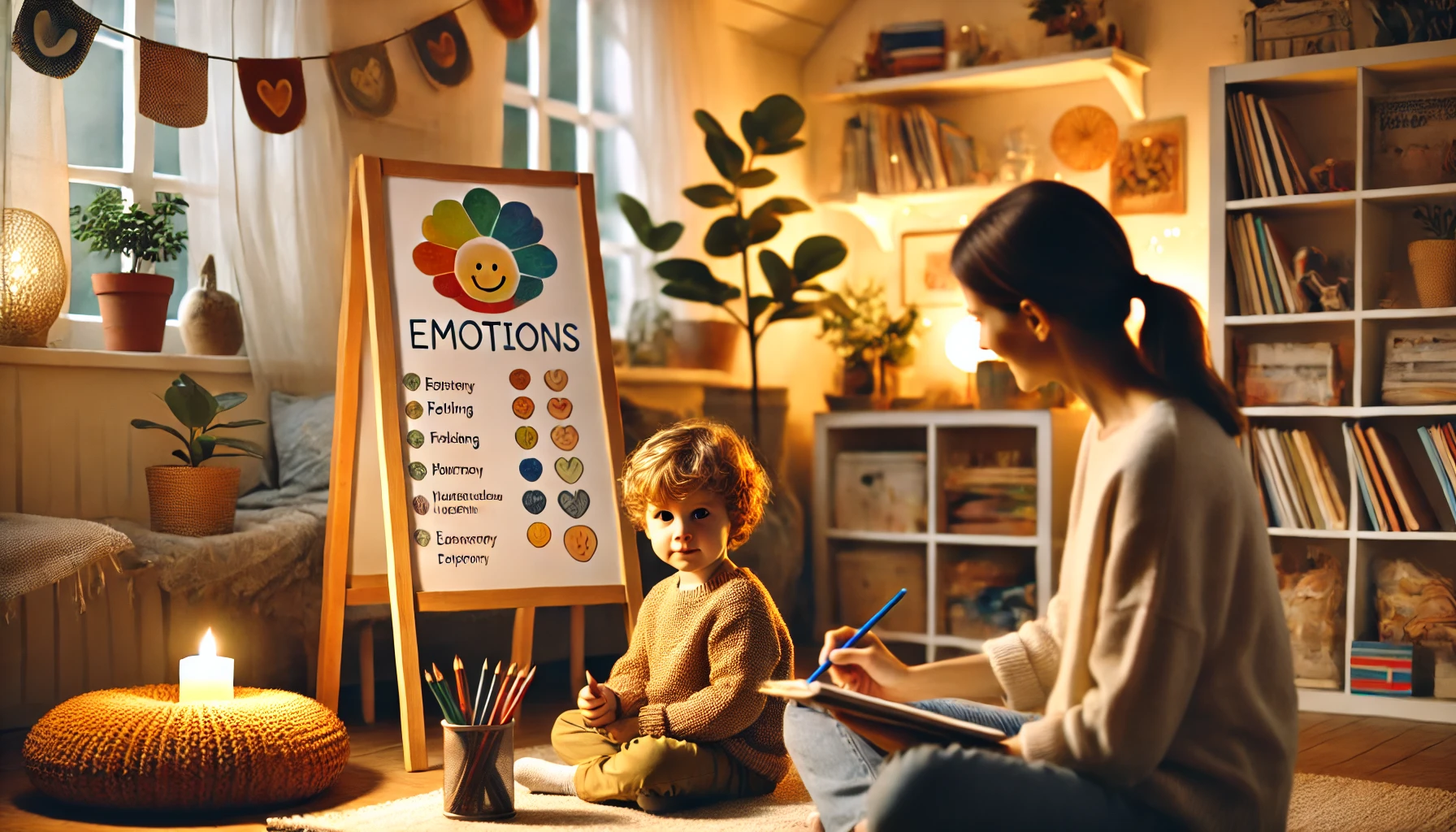How to Support Emotional Well-Being in Young Children at Home
Emotional well-being is just as important as physical health for a child’s overall development. Helping children understand and manage their emotions builds resilience, self-confidence, and positive relationships. By creating a supportive and loving home environment, parents can teach emotional skills that will benefit children throughout their lives. In this article, we’ll explore practical ways to support emotional well-being in young children.
Why Emotional Well-Being Matters
- Encourages self-expression – Helps children communicate feelings in healthy ways.
- Builds resilience – Teaches kids to cope with challenges and setbacks.
- Improves social skills – Strengthens relationships with family and friends.
- Enhances self-confidence – Encourages children to trust themselves and their emotions.
- Supports long-term mental health – Reduces stress and anxiety by teaching emotional regulation.
1. Create a Safe and Nurturing Environment
Children need a space where they feel loved, accepted, and understood.
Activity Idea:
- Show affection through hugs, kind words, and active listening.
- Create a calm space where children can relax when feeling overwhelmed.
- Maintain a predictable routine to provide a sense of security.
What Kids Learn:
- Emotional security
- Trust and comfort in expressing feelings
- The importance of feeling safe at home
2. Teach Children to Name Their Emotions
Helping children identify their emotions allows them to express themselves more effectively.
Activity Idea:
- Use emotion charts with pictures to help kids recognize different feelings.
- Ask, “How are you feeling right now?” and guide them to describe emotions.
- Read books about emotions and discuss how characters feel.
What Kids Learn:
- Emotional awareness
- How to express feelings in words
- The connection between emotions and actions
3. Encourage Healthy Ways to Express Feelings
Teaching children constructive ways to handle emotions prevents frustration and tantrums.
Activity Idea:
- Introduce journaling or drawing as a way to express emotions.
- Encourage kids to talk about their feelings rather than act out.
- Model how to express emotions calmly by saying, “I feel frustrated, so I’m going to take a deep breath.”
What Kids Learn:
- Emotional self-regulation
- Alternative ways to release emotions
- Problem-solving in emotional situations
4. Validate and Acknowledge Their Emotions
Children need to know that their feelings are understood and accepted.
Activity Idea:
- Instead of saying, “Don’t be sad,” try “I see that you’re feeling sad. Do you want to talk about it?”
- Show empathy by saying, “It’s okay to feel frustrated. Let’s find a way to help you feel better.”
- Encourage open conversations about emotions without judgment.
What Kids Learn:
- Self-acceptance
- The importance of feeling heard
- How to support others emotionally
5. Teach Coping Strategies for Stress and Anxiety
Giving children simple tools to manage stress helps them develop emotional resilience.
Activity Idea:
- Practice deep breathing exercises together.
- Use sensory activities like playing with stress balls or soft objects.
- Encourage outdoor play and movement to release energy.
What Kids Learn:
- Healthy stress management
- Mind-body connection
- Techniques to stay calm under pressure
6. Encourage Positive Social Interactions
Healthy relationships contribute to emotional well-being.
Activity Idea:
- Arrange playdates or social activities to help kids build friendships.
- Teach kindness and empathy through role-playing games.
- Encourage sharing, turn-taking, and teamwork in daily interactions.
What Kids Learn:
- Social skills and cooperation
- The importance of kindness and respect
- Building emotional connections with others
7. Foster a Growth Mindset
A growth mindset helps children embrace challenges and view mistakes as learning opportunities.
Activity Idea:
- Praise effort rather than just results: “I love how hard you worked on that puzzle!”
- Use positive language like “You can try again” instead of “You failed.”
- Celebrate small achievements to boost confidence.
What Kids Learn:
- Resilience in learning and life
- Confidence in their abilities
- Motivation to keep improving
8. Model Healthy Emotional Expression
Children learn emotional habits by observing their parents and caregivers.
Activity Idea:
- Show how to handle frustration calmly by using words instead of raising your voice.
- Talk about your emotions in everyday situations: “I felt happy when we played together today.”
- Demonstrate how to apologize and resolve conflicts peacefully.
What Kids Learn:
- Emotional intelligence through example
- Healthy conflict resolution
- The value of expressing emotions positively
Final Thoughts
Supporting emotional well-being in young children helps them develop self-confidence, resilience, and positive relationships. By creating a nurturing environment, teaching emotional awareness, and modeling healthy coping skills, parents can lay the foundation for a happy and emotionally secure future.
